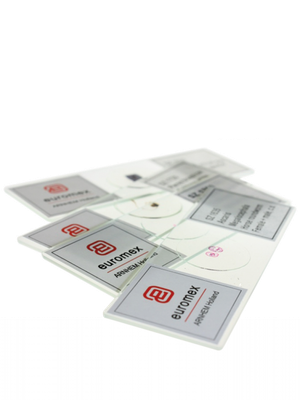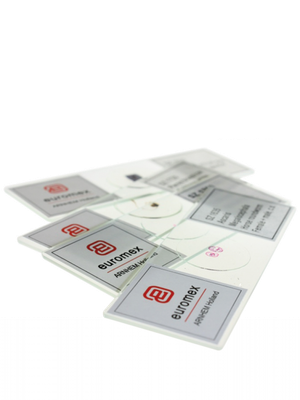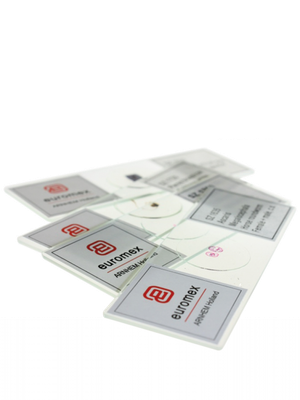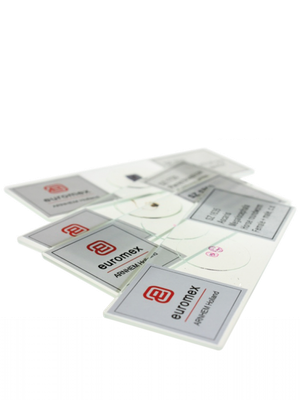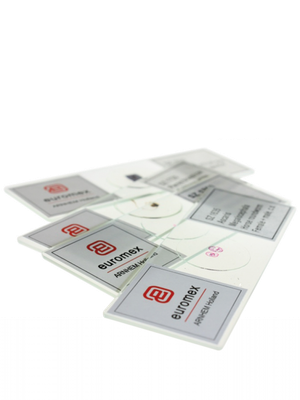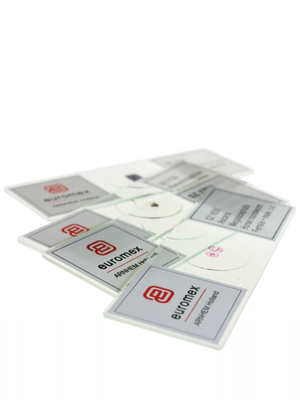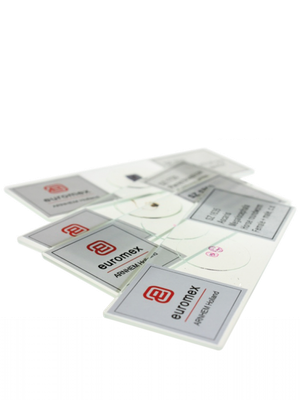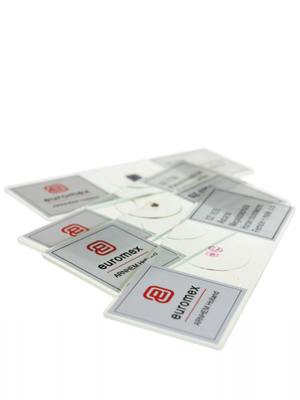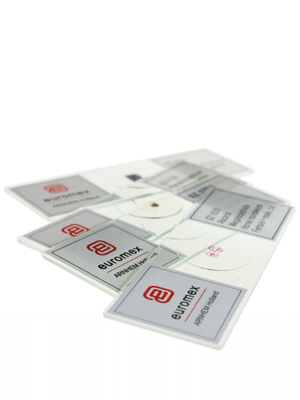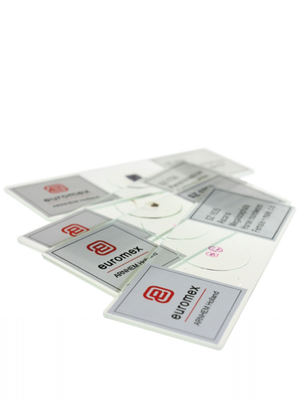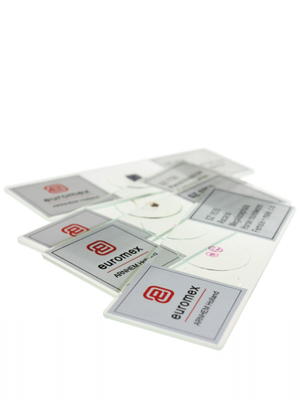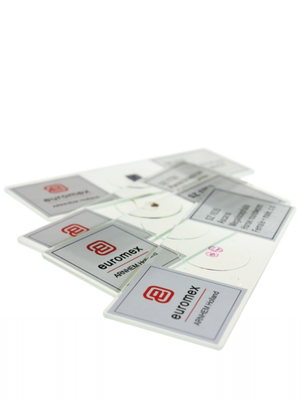Micropreparations set 2 (25 pieces)
[tab name='Description']
Euromex offers both teachers and microscopy amateurs a wide range of quality preparation sets. These sets can be used directly in biology lessons or as an introduction to zoology and botany.
Series with 25 micropreparations for human & mammalian histology, zoology and botany. Each set contains a variety of micro preparations (see details in next tab) All micro preparations are supplied in a plastic preparation box for 25 preparations
This set contains:
Histology
SH.1001 Connective tissue, loose mesh, rabbit
SH.1005 Hyaline cartilage tissue, rabbit, section
SH.1160 Rabbit atrial knot, section
SH.1230 Dog small intestine, cs
SH.1250 Pig liver , section
SH.1430 Small brain dog, section
Zoology
SZ.1520 Slipper animals, Paramecium, wm
SZ.1625 Schistosoma Japonicum, eggs, wm
SZ.1630 Tapeworm, Taenia of cattle, developed proglottids, wm
SZ.1635 Horse roundworm, Ascaris megalocephala, male and female, cs
SZ.1708 Honey bee, Apis mellifica, mouthparts
SZ.1725 Cockroach, Periplaneta, chewing mouthparts
SZ.1730 Cabbage butterfly, Pieres brassicae, mouthparts, wm
SZ.1750 Cockroach, Periplaneta, breathing opening, wm
Pantkunde
SB.2095 Hibiscus , young stem, cs
SB.2105 Hibiscus, young stem, cs
SB.2110 Pumpkin, Cucurbita, stem, ls
SB.2115 Mulberry, Morus Alba, or elder tree, Sambucus, stem with cambium and lenticels, cs
SB.2160 Lily, Lilium, leaf, cs
SB.2225 Maize, Zea mays, grain with embryo, ls
SB.2235 Pear, Pirus, stone cells of pulp, cs
SB.2240 Wheat, Triticum aestivum, grain, ls
SB.2305 Iron fern, Cyrtomium, rhizome with vascular bundles, cs
SB.2310 Iron fern, Cyrtomium, with sporangia, cs
SB.2386 Oscillatoria, green blue filamentous algae, wm
––––––– ––––––––––––––––––––––––––––––––– ––––––––––––––––––
Abbreviations
cs = cross section
ls = longitudinal section
wm = whole specimen
[tab name='Technical Specifications']
How are cells stained and samples prepared?
Cell staining techniques and preparation depend on the type of staining agent and method of analysis. One or more of the following procedures may be necessary to prepare a sample:
• Permeabilization - treatment of cells, usually with a mild surfactant that dissolves cell membranes to allow larger dye molecules to enter the cell
• Fixation - serves to "fix" or maintain cell or tissue morphology through the perparation process. This process can include several steps, but most fixation procedures involve adding a chemical fixative that creates chemical bonds between proteins to increase their strength. Common fixatives include formaldehyde, ethanol, methanol, and/or picric acid
• Mounting - involves attaching samples to a slide for observation and analysis. Cells can be grown directly on the slide or single cells can be applied to a slide using sterile techniques. Thin sections (slices) of material - such as tissue - can also be placed on a microscope slide for observation
• Staining - the application of staining agent to cells, tissues, components, or metabolic processes of cells to color. This method may include immersing the sample (before or after fixing or mounting) in a dye solution and then rinsing and observing the sample under a microscope. Some dyes require the use of an etchant, which chemically reacts with the colorant to produce an insoluble colored result. The etched dye will remain on/in the sample when the excess dye solution is rinsed away

